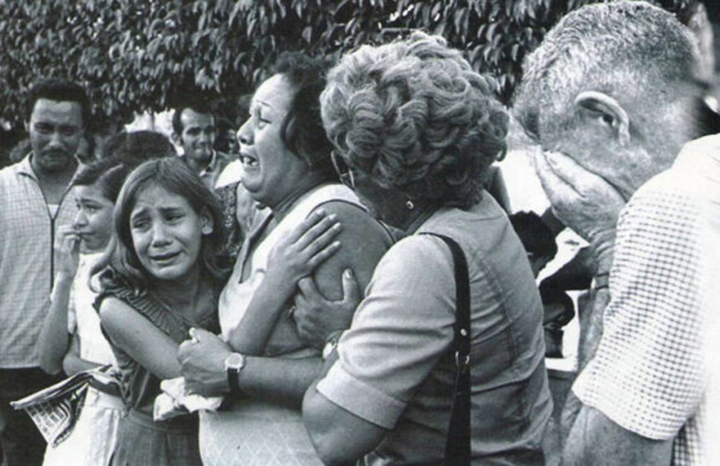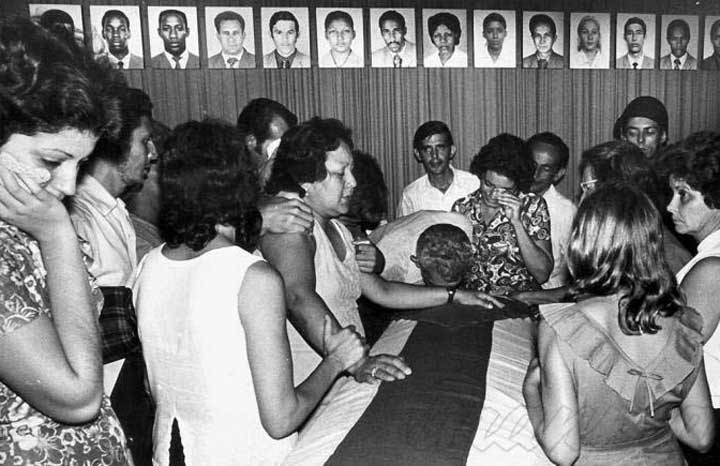
Havana, Oct. 6 - Forty-nine years have passed, and yet, October 6, 1976, feels close. Memory opens like a fresh wound, because pain doesn't expire, and neither does indignation.
That day, a commercial airplane with 73 people on board was torn from the sky by the cold calculations of terrorists. Time has aged the news, but not the question that continues to burn: what kind of mind can plan the death of young people who carried only medals and dreams?
It was Wednesday. Cubana de Aviación flight 455 took off from Grantley Adams Airport in Barbados, heading to Havana. Nine minutes later, an explosion interrupted the tranquility of the ocean and the routine of life.
In the cockpit, Captain Wilfredo Pérez tried to return: "We have an explosion on board, we're descending immediately!" he managed to say over the radio.
A second bomb cut off all hope. The plane plunged into the sea, leaving only the recording from the black box as a witness to the barbarity, and a cry that still chills the blood: "Stay close to the water, Felo, stay close to the water!"
Among the victims were 24 young members of the Cuban youth fencing team, absolute champions of the Central American and Caribbean Championship. They were returning home with all the gold medals, overflowing laughter, and the enthusiasm of sharing their triumphs.

None of them were older than 20. Their names, forever engraved in marble and in Cuba's memory, are the cruelest proof that terrorism knows no age or innocence. Alongside the Cubans, Guyanese students who would later pursue medical studies, North Korean officials, Cuban workers, and crew members doing their duty died.
The funeral in Havana was a day of pain and defiance. Before the coffins draped with the flag, Commander in Chief Fidel Castro Ruz spoke words that shook an entire nation: "When a vigorous and virile people weep, injustice trembles."
That phrase, more than a tribute, was a promise: that memory would be stronger than terror, that Cuba would not allow itself to be broken by violence.
The perpetrators—terrorists from the Cuban exile under the orders of the United States Central Intelligence Agency—were arrested, tried, and in most cases, later released.
Orlando Bosch died in Miami in 2011 without serving a day in prison for the crime. Luis Posada Carriles, mastermind of other attacks, died in 2018 protected by the same country that used him and then sheltered him. Impunity was their last refuge, an offense that still burns.
But beyond the political maneuvers, declassified reports, and mutual accusations, there remains the human dimension: mothers who could never embrace their children again, classmates who grew up with empty seats, coaches who kept the fencing weapons as if they were relics. Cuba remembers them as young people torn from life by hatred.
Each anniversary is a call to universal conscience. The attack on flight 455 was not only an act against a country but a crime against the human condition. Those who planted the bombs wanted to sow fear and division, but what they caused became a lesson in resistance and memory.

In Havana, Guyana, and Barbados, the Cuban flag flies at half-mast every October 6th, as a reminder that the pain of the victims is everyone's heritage, and that no political calculation justifies the deaths of innocent people.
The young fencers were never able to return to the arena, but their example lives on. They are a reminder that life is always more valuable than any ideology, and that terrorism, no matter where it comes from, is the most absolute denial of humanity.
Almost five decades later, the sea of ??Barbados still holds its secrets, but Cuban memory refuses to remain silent. Because as long as there are those who remember them, the crime will not go unpunished in the hearts of the people. (Text and photos: ACN)